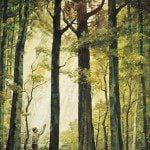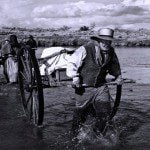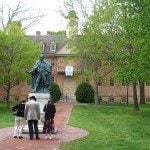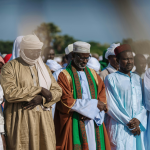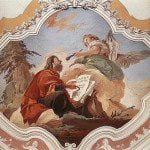
As I’ve noted here, I was born to a marginally active Latter-day Saint mother and a nominally Protestant father. It was many years before I discovered the depth of the roots of my maternal family in the Restoration. But I want to say something about one of my ancestors here.
Polly Peck was born in Cumberland County, New York, on 16 April 1774, two years before the Declaration of Independence was written. She married Joseph Knight in Windham County, New York, in 1795 and, by 1811, they were living in what would eventually be known as Colesville, Broome County, New York. The Knights became relatively prosperous farmers and landowners there and, in April 1826, they encountered the twenty-year-old Joseph Smith. Joseph Knight first met the young prophet when Joseph Smith was working for Josiah Stowell, and ultimately employed the young man himself. (He later described Joseph Smith as “the best hand he ever hired.”)
By then, of course, Joseph Smith had already had his First Vision, and he was receiving annual tutorials from the Angel Moroni. The Knights were among the very first to hear about his involvement with divine messengers and to accept his claims, and they supported him during the translation of the Book of Mormon. (In fact, Joseph Smith used Joseph Knight’s wagon to bring the plates from the Hill Cumorah.) They were among those who were present in Fayette, New York, on 6 April 1830, when the Church of Jesus Christ of Latter-day Saints was formally organized.
It was in Colesville, on either 28 June or 29 June 1830, that Polly Knight was baptized into the new church by Oliver Cowdery; the Colesville Branch, which was essentially the extended Knight family, became the first organized unit of the Church. Then, in December of 1830, Joseph Smith received a revelation directing the Saints to leave New York and to gather on the western frontier:
And again, a commandment I give unto the church, that it is expedient in me that they should assemble together at the Ohio. . . . Behold, here is wisdom, and let every man choose for himself until I come. (Doctrine and Covenants 37:3, 4).
It was the first hint of the doctrine of “the Gathering.” Shortly thereafter, on 2 January 1831, another revelation advised as follows:
And they that have farms that cannot be sold, let them be left or rented as seemeth them good. . . . And if ye seek the riches which it is the will of the Father to give unto you, ye shall be the richest of all people, for ye shall have the riches of eternity. (Doctrine and Covenants 38:37, 39).
The Knights made their choice. In obedience to revelation, sometime during April 1831 they left the farm on which they had lived since 1811 and that they had worked and cultivated for twenty years. When they set out for Ohio, part of it had still not been sold.
As a unit, the Colesville Branch traveled to Thompson, Geauga County, Ohio, arriving there in May 1831. They settled on land offered by Leman Copley, a convert from Shakerism, and immediately began to plow, plant, and fence, and to build homes. But Leman Copley apostatized about three weeks after their arrival and angrily expelled the Knights and the other Latter-day Saints from his farm property. On 10 June 1831, in a revelation responding to an anxious request from Newel Knight for guidance, the Colesville Branch was given its next assignment:
Behold, verily, verily, I say unto you, my servant Newel Knight, you shall stand fast in the office whereunto I have appointed you. And if your brethren desire to escape their enemies, let them repent of all their sins, and become truly humble before me and contrite. And as the covenant which they made unto me has been broken, even so it has become void and of none effect. And wo to him by whom this offense cometh, for it had been better for him that he had been drowned in the depth of the sea. But blessed are they who have kept the covenant and observed the commandment, for they shall obtain mercy.
Wherefore, go to now and flee the land, lest your enemies come upon you; and take your journey, and appoint whom you will to be your leader, and to pay moneys for you. And thus you shall take your journey into the regions westward, unto the land of Missouri, unto the borders of the Lamanites. And after you have done journeying, behold, I say unto you, seek ye a living like unto men, until I prepare a place for you. And again, be patient in tribulation until I come; and, behold, I come quickly, and my reward is with me, and they who have sought me early shall find rest to their souls. (Doctrine and Covenants 54:2-10)
In response to that directive, the Knights and the rest of the Colesville Branch next set out for Kaw Township, Jackson County, Missouri. But Polly’s health was failing. In fact, so serious was her illness that, at one point, her son Newel left the group to obtain wood in order to prepare a coffin for her. But she was determined to reach the land of Zion. She prayed to survive until then, and she held on. Evidently, she participated in laying the foundation for the city of Zion and in ceremonies that dedicated both the land in general and the site for its future temple.
Then, on 7 August 1831, just to the west of the Big Blue River, which is west of Independence, Missouri, Polly Peck Knight died. She was the first Latter-day Saint to die in Jackson County, the first martyr of the gathering, the first of thousands who would ultimately sacrifice all, dying en route to Zion.
On the very same day, Joseph Smith received a revelation in Jackson County that opened with the following two verses:
Behold, blessed, saith the Lord, are they who have come up unto this land with an eye single to my glory, according to my commandments.
For those that live shall inherit the earth, and those that die shall rest from all their labors, and their works shall follow them; and they shall receive a crown in the mansions of my Father, which I have prepared for them. (Doctrine and Covenants 59:1-2)
Hers is a rich legacy, an inspiring challenge to her descendants.
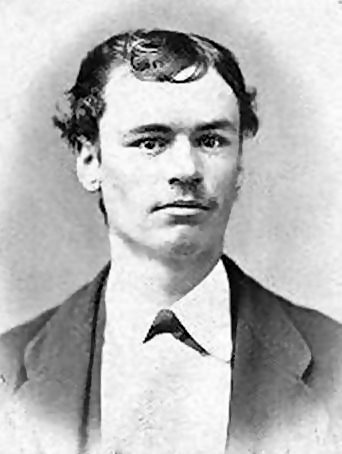
I heard a quotation today in our elders quorum meeting that impressed me. It comes from Elder Orson F. Whitney (1855-1931) of the Quorum of the Twelve:
No pain that we suffer, no trial that we experience is wasted. . . . All that we suffer and all that we endure, especially when we endure it patiently, builds up our characters, purifies our hearts, expands our souls, and makes us more tender and charitable. . . . It is through sorrow and suffering, toil and tribulation, that we gain the education that we come here to acquire. (Cited in Spencer W. Kimball, Faith Precedes the Miracle [1972], 98.)
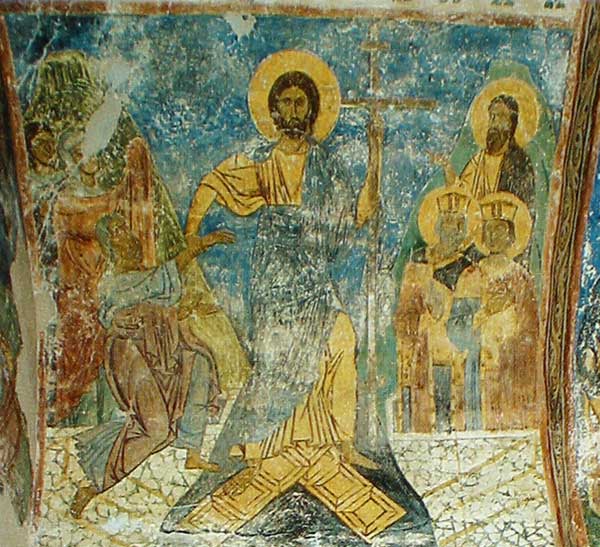
Finally, it seems obvious from these and other horror stories that have been preserved in the Christopher Hitchens Memorial “How Religion Poisons Everything” File™ that theistic busybodies simply refuse to let the rest of the world alone:
- “The Church of Jesus Christ Strengthens Global Effort to Help Women and Children: Efforts helped improve the lives of more than 21 million women and children worldwide, doubling the impact of initial projections”
- “The Church of Jesus Christ increases international relief to 12 ‘high-need’ countries with $63.4 million donation: The funds announced by Relief Society President Camille Johnson mean that, since 2023, more than $119 million has been donated to the Global Initiative to Improve the Well-being of Women and Children.”
- “President Johnson Concludes Asia Ministry Focused on Women and Children”
- “Church Dedicates Global Education Center in Lagos, Nigeria: Facility is the fourth of its kind globally.” This item was published back in mid-February, but I don’t recall calling attention to it then. So I mention it now.
- “Ministering and the Bishops’ Storehouse — Including People: Ministering includes identifying needs, extending the Savior’s relief and inviting others to make and keep covenants with Heavenly Father and Jesus Christ”
- “Church Donation Benefits More Than 12,000 Students in Montero, Bolivia”
It’s impossible to escape the question: How long, O pointless, unaware, and uncaring cosmos, must we endure such impositions?
Posted from Park City, Utah


